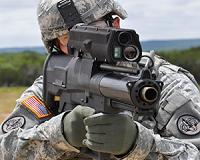| . |  |
. |
London, UK (SPX) May 17, 2010 Bats' remarkable ability to 'see' in the dark uses the echoes from their own calls to decipher the shape of their dark surroundings. This process, known as echolocation, allows bats to perceive their surroundings in great detail, detecting insect prey or identifying threatening predators, and is a skill that engineers are hoping to replicate. A team of British researchers has worked with six adult Egyptian fruit bats from Tropical World in Leeds to record and recreate their calls. These calls are pairs of 'clicks' from the bats' tongues that they use to fill their surroundings with acoustic energy; the echoes that return allow the bats to form an image of their environment. New research published in IOP Publishing's Bioinspiration and Biomimetics, describes how engineers and biologists from the Universities of Strathclyde and Leeds worked with the bats to record their double-click echolocation call, and its returning echoes, using a miniature wireless microphone sensor mounted on the bat whilst in flight. During echolocation, some bats are known to use a natural acoustic gain control. This allows them to emit high-intensity calls without deafening themselves, and then to hear the weak echoes returning from surrounding objects. The researchers replicated this system in electronics to allow the sensor to record both the emitted and reflected echolocation signals, providing an insight into the full echolocation process. The six bats performed up to sixteen flights each along a flight corridor. Each flight was short - lasting only about three seconds - but, with the bats' clicks only lasting a quarter of a millisecond, a large number of calls were recorded for the scientists to analyse. Once back into the laboratory, the researchers were able to accurately recreate the echolocation calls using a custom-built ultrasonic loudspeaker. This technique will allow the signals and processes bats use to be applied to human engineering systems such as sonar. Specifically, the researchers are looking to apply these techniques in the positioning of robotic vehicles, used in structural testing applications. Lead author Simon Whiteley from the Centre for Ultrasonic Engineering at the University of Strathclyde, said, "We aim to understand the echolocation process that bats have evolved over millennia, and employ similar signals and techniques in engineering systems. We are currently looking to apply these methods to positioning of robotic vehicles, which are used for structural testing. This will provide enhanced information on the robots' locations, and hence the location of any structural flaws they may detect."
Share This Article With Planet Earth
Related Links Institute of Physics The latest in Military Technology for the 21st century at SpaceWar.com
 XM25 Lets Soldiers Eliminate Targets They Can't See
XM25 Lets Soldiers Eliminate Targets They Can't SeeAberdeen Proving Grounds MD (SPX) May 12, 2010 The Army's Program Executive Office Soldier showcased some of its products May 5 at the Aberdeen Test Center here. Among those products were the XM153 Common Remotely Operated Weapon Station, the M2 .50 Caliber Machine Gun with M2E2 Quick Change Barrel Kit, the lighter weight M240L Medium Range Machine Gun, and the XM25 Counter Defilade Target Engagement System. Lt. Col. Christopher Lehner ... read more |
|
| The content herein, unless otherwise known to be public domain, are Copyright 1995-2010 - SpaceDaily. AFP and UPI Wire Stories are copyright Agence France-Presse and United Press International. ESA Portal Reports are copyright European Space Agency. All NASA sourced material is public domain. Additional copyrights may apply in whole or part to other bona fide parties. Advertising does not imply endorsement,agreement or approval of any opinions, statements or information provided by SpaceDaily on any Web page published or hosted by SpaceDaily. Privacy Statement |